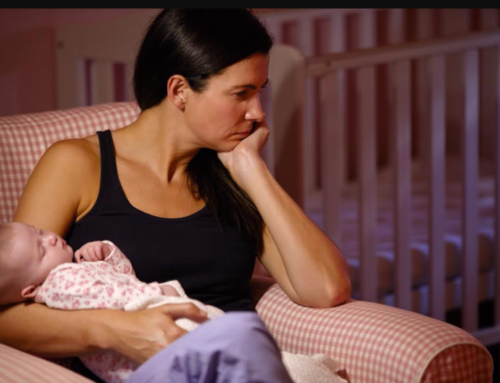By Schyler Benson, MA.
You’ve made the decision to divorce and then you are faced with the next question… “How do we tell our children”?
As a therapist who works with children, one of the questions I am asked most frequently is, “How do we tell our child/ children we are getting divorced?” This discussion does not have to become a nightmare if it is handled correctly.
When going through a divorce, there are many things to consider. The most important factor to consider which can often be forgotten is how to tell your children. People often assume that “children will automatically adjust to situations around them “which can be true if the situation is handled correctly. Children are often creatures of habit and find their comfort and security with routines and boundaries but in the right circumstances can be very flexible and resilient.
For the best results in preparation of this serious talk with your little ones, it is important to have a discussion with the child/children after the adults have had their own conversation about what will and will not be shared with the child. This will help avoid confusion, especially for the child, and also blaming one another.
There are six main aspects that parents should be united on when telling the children they are getting divorced.
- Agreement of timing
- Tell the children together
- Keep it simple
- Explanation of the divorce without blame
- Remaining open for all questions the children have and offering explanations that are age appropriate
- Aftercare
Agreement of Timing
The first aspect to consider when approaching this serious discussion with your child is the importance of choosing a specific time. It is best to choose a time that is not only convenient for each person involved but also a time that will allow for your child to ask questions as to how this new concept and idea will affect him/her on a daily basis and also special occasions such birthdays, family vacations, and holidays. This is a time to offer lots of comfort such as hugs and reassurance that everything will be ok. Avoid approaching this serious conversation right before the child would leave the home for school or is preparing to go to bed which could be traumatizing to the child when left with unanswered questions and their own fears of how this could destroy their world.
Tell the Child Together
The second aspect to consider would be telling your child together. Presenting this new idea as a united front will help preserve your child’s sense of trust in both parents. Keep in mind that children are very perceptive and probably have already picked up on the fact that something is wrong. In telling younger children you might consider one simple idea such as, “Mom and dad are not going to live together anymore but we will always be your parents, and we will always love you very much” If you are communicating with an older child you may choose to say something like, “We both love you very much but have decided that it is best for us to get a divorce which means that we will not be living together but we want to reassure you that we will both always be there for you.” You also need to reassure the child that they can come to either of you with questions they have at any time. Children are processers and thinkers and as time passes, they will have more questions. It is important that they know you are available
Keep It Simple
The third aspect to consider is the basic foundation of this conversation which is to keep it simple. It is very important to explain the idea of divorce in a way that your child will understand while using age-appropriate language and concepts that the child can grasp and understand. The use of a few key sentences can be just enough to communicate the message you are intending. One may be, “Dad and mom have been doing a lot of thinking and dad is going to get a new apartment.” It is often helpful to explain the plan of homes to the child which includes where the homes will be located and what each home will look like for each child. If possible, you should include information such as where they will sleep and what toys they will have at the house of the parent that is moving out, which are often thoughts they may have. The overall message conveyed to each child should be that you are doing what is best for the family.
Explanation Without Blame
The fourth aspect to consider when explaining divorce to your child is that it is not their fault. It helps to explain that this is an adult decision while using a simple concise statement such as, “Sometimes things happen with moms and dads. We are really sorry that it happened, but it is not anything that you have done.” During this explanation, it is important to avoid blaming one another for this change and not to argue in front of the child. It is best to keep the details of the divorce to yourself and not to share with the child which could often times be traumatizing to the child and create further confusion and pain. This also includes ideas that may often be overlooked such as; leaving divorce papers out of sight, being aware of language and content being spoken (even on the phone) while the child is also in the home.
Aftercare
Aftercare for your child is as equally important as the discussion you have with your child regarding the divorce. One foundational piece is creating a safe and loving environment for your child. No matter the location, they need to know and feel as though they are loved and cared for. Each child will need each parent to pour on their expression of love through possible extra quality time together, snuggles, bedtime stories, and continued reassurance. Stability is very important as a child’s world is turned upside down by divorce. The consistency of routine is very crucial, such as school, bed times, meals, activities, homework, chores, and rules.
It is often helpful to have your child talk to a mental health professional about the idea of divorce. This can be an opportunity for the child to ask all the questions they have without the fear of hurting mom or dad’s feelings or the risk of making their parents angry. The child may struggle to express their feelings by holding them inside or having behavioral outbursts with others in the struggle to grasp this new and scary life transition. It is important that each parent continue to look for serious signs of their child’s struggle. It may begin at any time and will often get worse with bed times, switching to and from the other parent’s home, life transitions and holidays. Each child will benefit from therapy by learning effective strategies of how to express their thoughts and feelings in a healthy manner and how to adjust to life’s continued changes. Most importantly, continue to remain positive, loving, and open for any questions that your child may have knowing that you will always be their rock and source of stability.
Remember that no one likes change especially ones that are painful. Remember that each child responds differently and the most important thing you can do to ensure that your child is able to adjust in a healthy manner is to be present and to listen.
Resource Recommendations:
Brown, M. and Kransy-Borwn, L. (1988). Dinosaurs Divorce. Little Brown Books for Young Readers.
Lansky, V. (1997). It’s Not Your Fault, Koko Bear. The Book Peddlers
Levins, S. and Langdo, B. (2005). Was It The Chocolate Pudding? : A Story For Little Kids About Divorce.
Masurel, C. (2003). Two Homes. Candlewick.
Rogers, F.(1998). Let’s Talk About It: Divorce. USA: Puffin Books.
Thomas, P. (1999). My Family’s Changing (A First Look At Series). Barron’s Educational Series.






